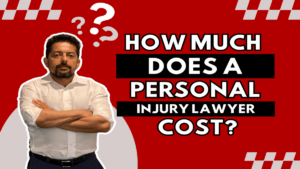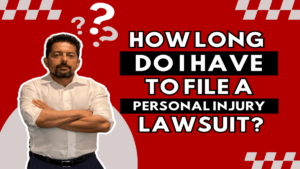Rear end accidents are a common occurrence on the roads, and they can lead to various complications, including property damage and injuries. When such incidents happen, it’s crucial to understand how insurance companies evaluate them to determine who is at fault. In this blog post, we will explore the factors that insurance companies consider when assessing rear end accidents and how you can navigate this process.
Understanding the Default Position
In the world of insurance claims, the default position for rear end accidents is that the driver who rear-ended another vehicle is often deemed at fault. This assumption holds true in a square hit from behind, as it is generally considered the responsibility of the trailing driver to maintain a safe following distance and avoid collisions.
Property Damage Analysis
When assessing rear end accidents, insurance companies primarily focus on property damage. If the damage alone is considered, approximately 90% of insurance companies will assign fault to the driver who rear-ended the other vehicle. This can be disheartening for the person who got hit, but it is essential to remember that this default position can be challenged under specific circumstances.
Role of Dash Cams
In recent years, dash cameras have become invaluable tools in evaluating rear end accidents. These devices provide objective evidence that can shed light on the sequence of events leading up to the collision. If you have a dash cam in your vehicle and it captures the accident, it can significantly influence the insurance company’s evaluation.
Independent Witnesses
Another critical factor in determining fault in rear end accidents is the presence of independent witnesses. These are individuals who were not directly involved in the accident but were at the scene and observed what happened. Eyewitness accounts can be instrumental in challenging the default position of assigning fault to the rear-ending driver. Their testimonies can provide a more comprehensive picture of the accident and may support the claim of the driver who got rear-ended.
Impact on Police Report
The police report is often a crucial document in rear-end accident evaluations. The default position for the police, much like insurance companies, is to assign fault to the driver who rear-ended another vehicle in a square hit. However, it’s important to note that the police report is not the final word on the matter. Insurance companies consider various factors beyond the initial report.
Insurance Company Assessments
Insurance adjusters play a pivotal role in evaluating rear end accidents. They assess the extent of property damage, review any available dash cam footage, and take into account eyewitness testimonies. Insurance companies strive to make fair determinations based on the available evidence rather than solely relying on the default position.
Protecting Your Rights
If you find yourself in a rear-end accident and believe that the default position does not accurately reflect the circumstances, it’s essential to take proactive steps. Contact your insurance company promptly and provide them with any evidence you have, such as dash cam footage or witness statements. This can help ensure a more accurate assessment of the accident.
Conclusion
In rear end accidents, insurance companies typically assign fault to the driver who rear-ended another vehicle, based on the default position. However, factors like dash cam footage and independent witnesses can influence their evaluations. If you believe you have a case that challenges the default position, it’s crucial to provide all relevant evidence to your insurance company. By doing so, you can protect your rights and ensure a fair assessment of the accident.
If you have any questions or need assistance, don’t hesitate to contact us. Your well-being and rights are our top priority.






















